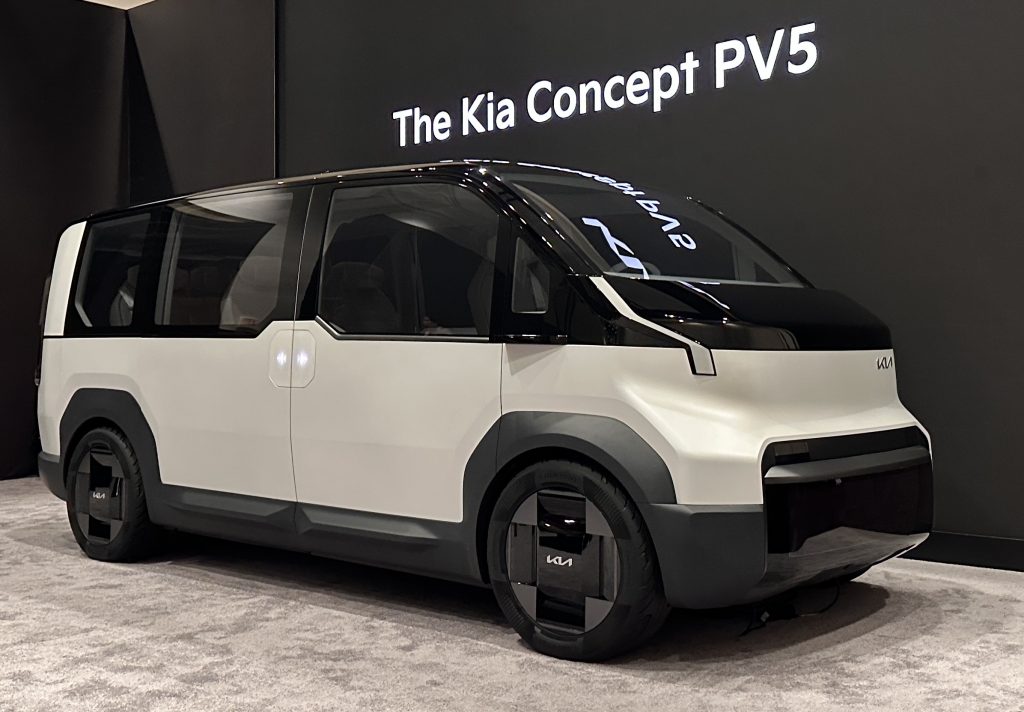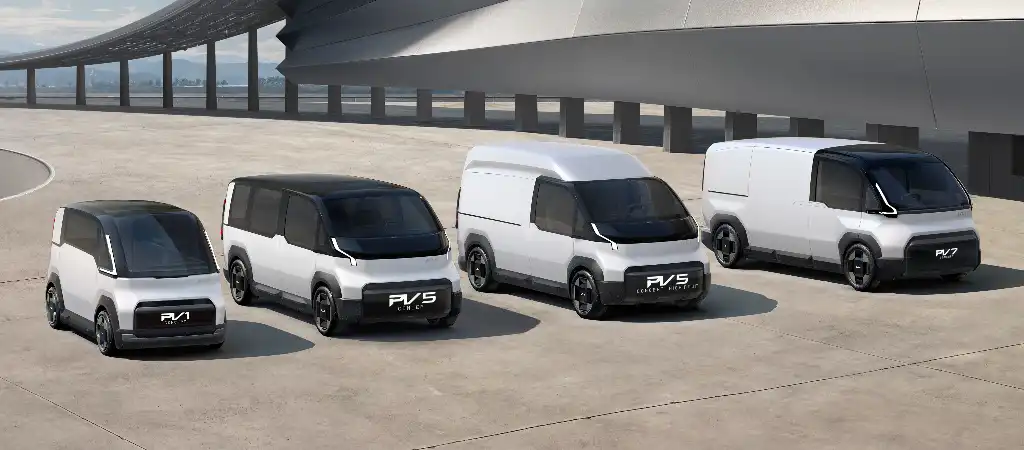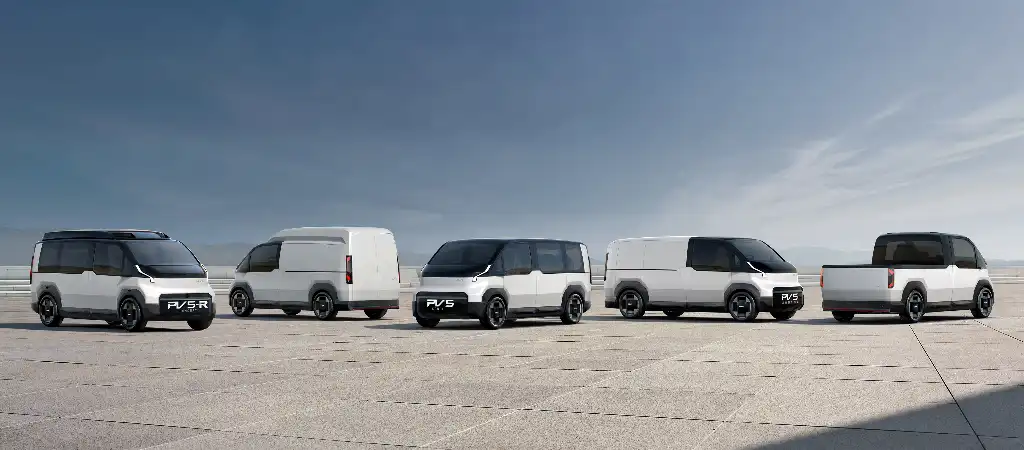
Kia has revealed its ambitious plans to launch a range of electric vans in four sizes with multiple body types.
The new portfolio of Kia vans will start with the PV5, a medium-sized van that has a target launch price of €35,000.
A new production facility in Korea will be built to produce the vehicle with plans to make 150,000 units by 2026 when the PV5 will go on sale. The new manufacturing site has been designed solely to produce PBVs and will use a bespoke and more flexible manufacturing process that will eventually see production reach up to 300,000 units.

A larger model, called PV7 will follow with a smaller fully autonomous driverless model called PV1 planned for phase two.
Kia says its second phase products will be launched between 2027 and 2032 and will have level 4 autonomous capabilities with AI-based mobility functions. The range is planned to continue to evolve beyond 2032 with more conceptual ideas around big data and connected cities. A fourth city van model called PV3 is also planned with no specific timeline. Its arrival, it is said, will depend on how the other models in the range are received.
Measuring 4.7m long, the PV5 will come in both standard and high roof variant panel vans, a six-seat people mover and an autonomous taxi.
Its length makes it slightly smaller than a Ford Transit Custom, while its height appears to be very similar. That should give it a load volume of slightly under 6m3 for the standard van.
There’s no announcement yet on what motors or batteries the PV5 range will get but it will be built on an adapted version of the E-GMP platform which is currently used by the Kia EV6 and Kia EV9 electric passenger cars. However, the PV5 range will use a 400V electrical system, rather than 800V.
Kia also plans to introduce body swapping technology by 2027, an example of which was shown as a pick-up body based on a PV5 chassis cab.
Kia has named the entire new product line as PBVs, standing for Platform Beyond Vehicles.
“The KIA PBV s will open the door to new business and lifestyles by redefining the concept of space. The innovative use of space will enable a more efficient and reliable vehicle experiences. By showcasing Kia’s concept PBV we are prepared to be the first mover in the global PBV market,” said Kia President and CEO, Ho Sung Song.
A feature of each of the models is their universal load-height which will allow loads to be transferred seamlessly between the vehicles, regardless of their size.
Kia’s concept shows the larger PV7 – a 5m to 5.9m model – off-loading its contents to the autonomous PV1 using a rail system which transfers cargo modules between the vehicles. The Ford Transit dimensions start at 5.5m with long wheelbase vans measuring just over 5.9m.
Kia confirmed that the PV7, scheduled for release in 2027, will be available in front-wheel-drive and with an all-wheel-drive model. Further details of PV1 and PV3 are not yet available as neither has a planned on-sale date yet.
Built on an electric skateboard platform, all PBV models have what's called a "dynamic hybrid" modular body, that Kia says reduces the amount of parts needed by 55%. It combines tubular steel and engineered polymers with no loss of strength.
There will also be a high level of recycled content in the range, with materials like recycled sea plastics from the Kia-backed Ocean Cleanup project being re-used in the vans.

Update (5 April): At their 2024 CEO Investor Day in Korea, Kia confirmed that the PV5 would start production in 2025 with European sales commencing in early 2026. The Kia PV7 was also confirmed to launch in 2027.
Kia President and CEO, Ho Sung Song, confirmed the Kia van would be targeting global sales of 250,000 electric vans by 2030 with am aim to sell 150,000 units of the Kia PV5 and 100,000 units of the Kia PV7. Customers are expected to come from both B2B and B2C customers, covering delivery, utility and people moving.